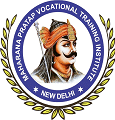Fire and Safety Course
Definition: Fire and safety refer to the measures taken to prevent, control, and respond to fire hazards to protect life, property, and the environment.
Types of Fires:
Class A: Ordinary combustibles (wood, paper)
Class B: Flammable liquids (petrol, oil)
Class C: Electrical fires
Class D: Combustible metals
Class K: Cooking oils and fats
Fire Triangle: Fire needs heat, fuel, and oxygen to start. Removing any one can extinguish the fire.
Common Fire Safety Equipment:
Fire extinguishers (ABC type)
Fire alarms and smoke detectors
Sprinkler systems
Fire blankets and hose reels
Basic Fire Safety Rules:
Never overload electrical sockets.
Store flammable materials safely.
Follow proper procedures when using fire-related equipment.
Know the location of exits and fire extinguishers.
Emergency Steps (R.A.C.E.):
R – Rescue anyone in danger
A – Alarm: Raise the fire alarm
C – Confine the fire (close doors)
E – Extinguish if safe or Evacuate
Importance: Fire and safety training reduces the risk of accidents, saves lives, and ensures a safe working or living environment.

Course Overview
At Maharana Pratap Vocational Training Institute, we offer a Diploma in Fire and Safety Management designed to prepare students for high-demand careers in fire safety, industrial protection, and disaster response. Inspired by the bravery and leadership of Maharana Pratap, our program combines technical knowledge with real-life safety practices to develop responsible and skilled safety professionals.
📅 Course Duration
1 Year (can also be offered as a 6-month fast-track option)
✅ Eligibility Criteria
Minimum Qualification: 10th or 12th Pass (from a recognized board)
Physically and medically fit
Basic communication skills
🧯 Course Modules
Introduction to Fire Science
Industrial Fire Prevention
Fire Control Systems and Safety Devices
Firefighting Equipment and Use
Emergency Planning and Evacuation
First Aid and Rescue Operations
Legal Safety Regulations (OSHA, Factories Act)
Disaster Management and Risk Mitigation
Personal Protective Equipment (PPE)
🛠️ Practical Exposure
Hands-on training with fire extinguishers, alarms, and hydrants
Rescue operation simulations
Fire drills and safety mock exercises
On-site safety inspections and audits
🎓 Certification
Students will receive a Diploma Certificate from MPVTI, recognized by industry partners and suitable for government and private sector employment.
💼 Career Pathways
Graduates can work as:
Fire & Safety Officers
Industrial Safety Supervisors
Emergency Response Coordinators
Safety Auditors
Health, Safety, and Environment (HSE) Professionals
🏭 Placement Sectors
Construction and Infrastructure
Oil & Gas and Power Plants
Hospitals and Hotels
Airports, Railways, and Malls
Fire Departments and Rescue Services
Overseas (especially Gulf countries).

